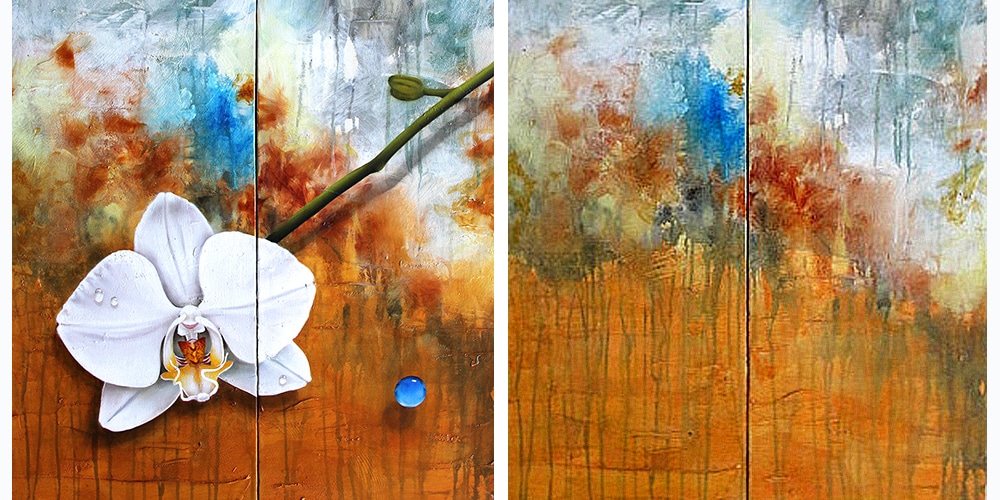Although I paint representationally, I admire abstract paintings. To me they seem very difficult to do, and require a bit of bravery on the part of the artist. The abstract painting can reveal more of who you are — that first mark on the canvas can be fearful.
As a compromise to my timid self, I decided I wanted to try an abstract background for my more realistic paintings. Unsure of how to begin, I signed up for a class from Brenda Hope Zappitell, an abstract artist whose work I liked. I joined a few other artists who had come from long distances to work on their craft with Brenda. I was the only artist in the workshop who painted realistically. Though I was hesitant at first, the class was so much fun, and Brenda Zappitell, as an instructor, was very generous with her knowledge and very encouraging to us, her students.
We boldly used acrylic paints in bright colors and began with something called “mark-making.” Once the first mark was placed on my canvas, the rest of the strokes came more easily. And if I was not happy with my work, I could wash the paint away or paint right over it.
After the workshop, I could not wait to come back to my studio and try to produce abstract background pieces for my floral paintings. I tried to remember everything Brenda said and went to work making the loveliest mess in my studio and having the best time.
The example below was painted on two panels, 48 inches tall. After I finished the abstract background using acrylic paints, retarder and water, I drew out an orchid for my first experiment. I planned on painting the flower in oil, so I coated the area that would be over-painted in oil with Liquitex gesso. That way the oil would adhere to the painted canvas surface.
After the gesso was completely dry, I painted the orchid with oils, then varnished the entire piece after the oil paint dried completely.




